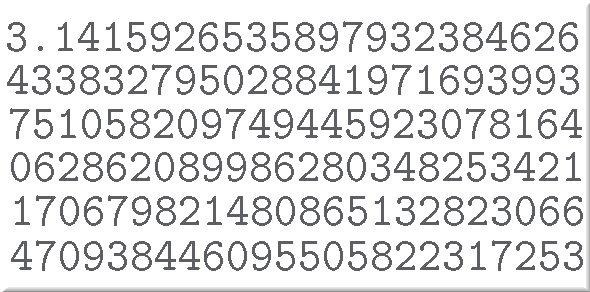| Tikalon Blog is now in archive mode.
An easily printed and saved version of this article, and a link
to a directory of all articles, can be found below: |
|
This article |
| Directory of all articles |
SETI AI
September 15, 2010
I subscribe to
Nature, which I consider to be the best general interest journal for professional scientists. The journal,
Science, comes in a close second, and I receive Science because I'm a member of the
American Association for the Advancement of Science. Nature publishes a one-page science fiction short story on the last page of each issue, in a department called "Futures." One of the July stories was "Gravity's whispers" by the accomplished science fiction author, astrophysicist and physics professor,
Gregory Benford.[1]
Click on the first reference if you'd like to read Benford's story before I spoil the plot.
The plot of Benford's story is that a scientist who's been looking for
gravitational waves with the
Laser Interferometer Gravitational-Wave Observatory (LIGO) discovers an intelligent signal encoded in a gravitational wave. The first interesting thing here is that
creation of gravitation waves requires manipulation of matter on a stellar or galactic scale. The second interesting thing is that the signal contains a proof of the
Riemann conjecture, a famous unsolved conjecture in mathematics that concerns the distribution of prime numbers. The Riemann conjecture is considered to be one of the most important unsolved problems in
number theory, and it's inspired the publication of quite a few excellent math papers and many false proofs. The point of Benford's story is that we humans are expecting radio signals from extraterrestrials with such prosaic content as the digits of π, digits of e, or a string of prime numbers. Instead we get a proof of Riemann's conjecture transmitted in a way we can't duplicate. Benford's protagonist has the perspicacious comment,
"Maybe it's good, really good, that we can't possibly answer them."

The first few digits of pi.
Scientists who are pursuing the Search for Extra-Terrestrial Intelligence (
SETI) have recognized that radio may not be an ideal medium for interstellar communication. Although they haven't pursued gravitational waves (no gravitational waves of any sort have been detected), they have considered
lasers. In any case, the presumed extraterrestrial intelligence has been assumed to be people much like us (albeit with green skin and antennae sticking out of their heads; but I jest). It might be that biological intelligence is just a transitory stage in the
evolution of intelligence. Many
computer scientists predict that
artificial intelligence may well surpass human intelligence in just a few decades, at a
Technological singularity, and the growth rate of artificial intelligence will be exponential. Within a century, humans may become inconsequential.
SETI scientists have taken heed, and they admit that our first extraterrestrial contact might be with a machine.[2] Seth Shostak of the
SETI Institute presented a paper at the
60th International Astronautical Federation Conference, (
Daejeon, South Korea), also published in
Acta Astronautica.[3] In this paper, Shostak writes that since the time between the development of radio technology and the development of computing and artificial intelligence is short, it's more likely that the extraterrestrial intelligence we find will be a machine and not a biological organism. Says Shostak,[2]
"...Within a few hundred years of inventing radio - at least if we're any example - you invent thinking machines; we're probably going to do that in this century. So you've invented your successors and only for a few hundred years are you... a 'biological' intelligence."
What this means from a SETI standpoint is that looking at earthlike planets might not be the best plan. The current emphasis is towards discovery of places where life like ours could evolve and thrive, places with liquid
water, an
oxygen atmosphere and a temperate environment; namely, a Star Trek "
Class-M planet." Machines would be interested in just raw materials and energy sources, so they might want to populate regions like the
galactic center, where both are plentiful. Shostak thinks that it will be more difficult to communicate with machines than biological organisms, the sentiment expressed in the Benford story.
References:
- Gregory Benford, "Gravity's whispers," Nature, vol. 466, No. 7304 (15 July 2010) pp. 295-406.
- Jason Palmer, "Alien hunters 'should look for artificial intelligence'," BBC Online, August 22, 2010.
- Seth Shostak, "What ET will look like and why should we care," Acta Astronautica, vol. 67, no, 9-10 (November-December 2010), pp. 1025-1029.
Permanent Link to this article
Linked Keywords: Nature Journal; Science Journal; American Association for the Advancement of Science; Gregory Benford; gravitational waves; Laser Interferometer Gravitational-Wave Observatory; creation of gravitation waves; Riemann conjecture; number theory; digits of pi; SETI; lasers; evolution; computer scientists; artificial intelligence; Technological singularity; SETI Institute; 60th International Astronautical Federation Conference; Daejeon, South Korea; Acta Astronautica; water; oxygen; Class-M planet; galactic center.